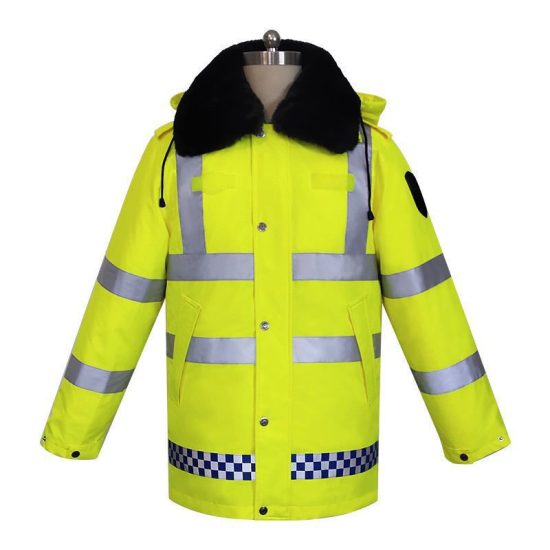Proper maintenance of safety wear is essential to ensure that it continues to provide adequate protection and remains in good condition. Here are some maintenance tips for various types of safety wear:
1. Helmets:
- Inspect your helmet regularly for cracks, dents, or damage. If you see any signs of damage, replace the helmet.
- Clean the helmet’s outer shell and inner padding regularly with mild soap and water. Avoid using harsh chemicals that may weaken the helmet’s materials.
- Store the helmet in a cool, dry place away from direct sunlight and extreme temperatures.
2. Reflective Clothing and High-Visibility Gear:
- Check for any tears, fraying, or fading in reflective clothing. Replace items that are damaged or no longer highly visible.
- Wash high-visibility clothing according to the manufacturer’s instructions, using a gentle detergent. Avoid using bleach or fabric softeners that can affect the visibility of the fabric.
- Store reflective clothing away from direct sunlight to prevent fading.
3. Gloves:
- Inspect gloves for tears, holes, or signs of wear and tear. Damaged gloves should be replaced.
- Clean gloves according to the manufacturer’s recommendations. Some gloves may be machine washable, while others require hand washing.
- Avoid exposing gloves to extreme heat or direct sunlight, as this can degrade the materials.
4. Eye Protection:
- Clean safety glasses or goggles with a lens cleaning solution designed for protective eyewear.
- Inspect lenses for scratches or damage. Replace eyewear with damaged lenses, as scratches can compromise visibility.
- Store eye protection in a protective case when not in use to prevent scratches.
5. Respiratory Protection (Masks and Respirators):
- Follow the manufacturer’s guidelines for cleaning and maintenance of masks and respirators.
- Replace filters and cartridges as recommended by the manufacturer or based on usage.
- Store respiratory protection in a clean, dry place, and avoid exposing it to contaminants when not in use.
6. Footwear (Boots and Shoes):
- Clean footwear regularly by wiping off dirt and debris with a damp cloth or brush. Use a mild soap or leather cleaner for leather boots.
- Allow wet footwear to air dry at room temperature. Avoid using direct heat sources like heaters or radiators, as this can damage the materials.
- Inspect the soles and tread for wear and tear. Replace worn-out footwear to maintain slip resistance.
7. Clothing (Gloves, Jackets, Pants, etc.):
- Follow the care instructions provided by the manufacturer for cleaning and laundering safety clothing.
- Inspect clothing for damage, fraying, or weakened seams. Replace items with significant damage.
- Store safety clothing in a cool, dry place away from direct sunlight to prevent fading and deterioration.
8. Accessories (Hard Hats, Knee Pads, etc.):
- Clean accessories with mild soap and water or an appropriate cleaning solution, following the manufacturer’s recommendations.
- Inspect accessories for cracks, breaks, or signs of damage. Replace damaged accessories promptly.
9. Regular Inspections:
- Conduct regular visual inspections of all safety wear items before each use.
- Keep records of inspections and replacements to ensure that safety wear is maintained in accordance with safety regulations and manufacturer recommendations.
Remember that the specific maintenance requirements for safety wear can vary depending on the materials and design of the items. Always follow manufacturer guidelines and safety regulations for proper care and maintenance to ensure the continued effectiveness of your safety gear.


